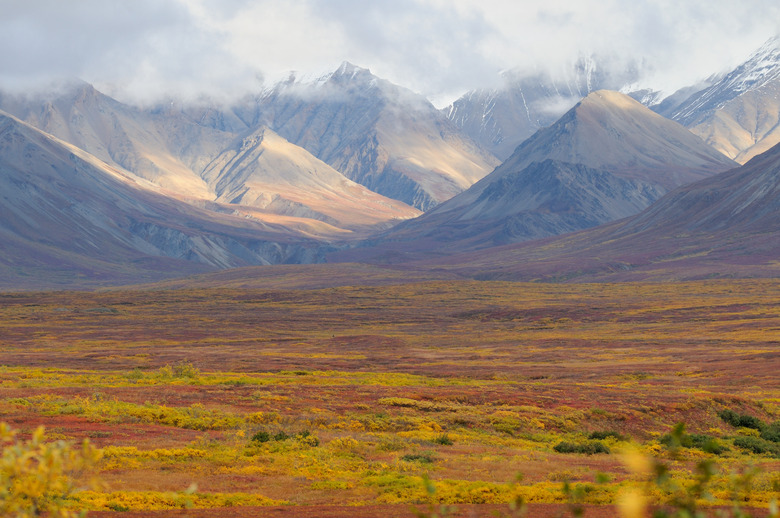The Climate In The Tundra
The tundra is known as the "land of the midnight sun" during the summertime, when the sun shines nearly 24 hours a day for six to 10 weeks. You can observe this transitional biome before reaching the ice caps of the North Pole. Learning more about this frozen desert and its climate will provide you with information that can be used to measure climate changes in the future.
Geography
Geography
You will find the tundra bordering parts of Eurasia and North America. The tundra also borders parts of Greenland, and you can best point out the tundra by places that are touched by the Arctic Ocean. Because the tundra is primarily located in the Northern Hemisphere, you will only be able to see it sparingly south of the equator near peninsular lands of Antarctica.
Features
Features
If visiting any part of the tundra, you would find it has a bitterly cold temperature nearly year-round. During the winter, the average temperature stays between 20 and 30 degrees Fahrenheit below zero. The warmest days of winter never break the plane of 20 degrees Fahrenheit. Summer in the tundra brings 24-hour sunshine that still won't raise temperatures above 50 degrees Fahrenheit. Temperatures will stay below freezing for nine months or longer during a one-year period in the tundra, averaging out at 16 degrees Fahrenheit annually.
Considerations
Considerations
The tundra doesn't receive very much annual rainfall. As a resident of the tundra, you could expect to see 10 inches of precipitation a year or less. This would make for few rainy days unless you live along the coasts, where average rainfall a year can nearly double to 18 inches annually. Humidity is relatively low in the tundra, and winds are high, adding to the dryness of the air.
Effects
Effects
High winds of the tundra are even more pronounced by the virtual nonexistence of trees. Low temperatures, harsh winters and limited amounts of light make it difficult for vegetation to grow. Much of the ground in the tundra is also composed of permafrost, which forms because of the constant freezing and thawing that happens on the active surface level of the ground. The water that is created in the summer is unable to drain away, causing bogs that re-freeze in the winter.
Significance
Significance
The extreme climate of the tundra makes it difficult for any life to survive easily in this biome. You will only find dwarfed vegetation because the roots of plants can't penetrate the permafrost. Animals that survive here barely find enough food to keep them warm in the winter. The tundra climate is drier than most of Earth's deserts, although it would be difficult for you to notice because the water evaporates slowly and sits on the surface.
References
Cite This Article
MLA
Lo, Mika. "The Climate In The Tundra" sciencing.com, https://www.sciencing.com/climate-tundra-5484883/. 22 November 2019.
APA
Lo, Mika. (2019, November 22). The Climate In The Tundra. sciencing.com. Retrieved from https://www.sciencing.com/climate-tundra-5484883/
Chicago
Lo, Mika. The Climate In The Tundra last modified March 24, 2022. https://www.sciencing.com/climate-tundra-5484883/
